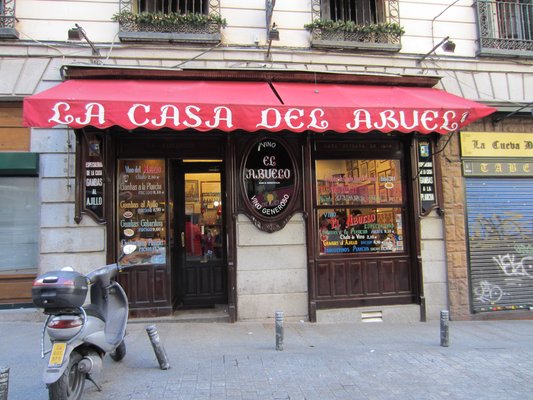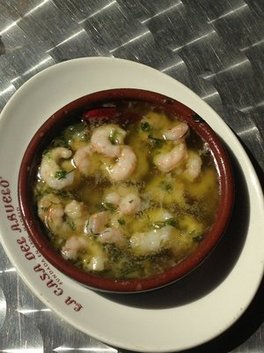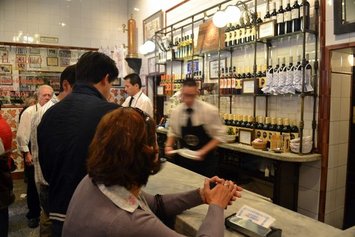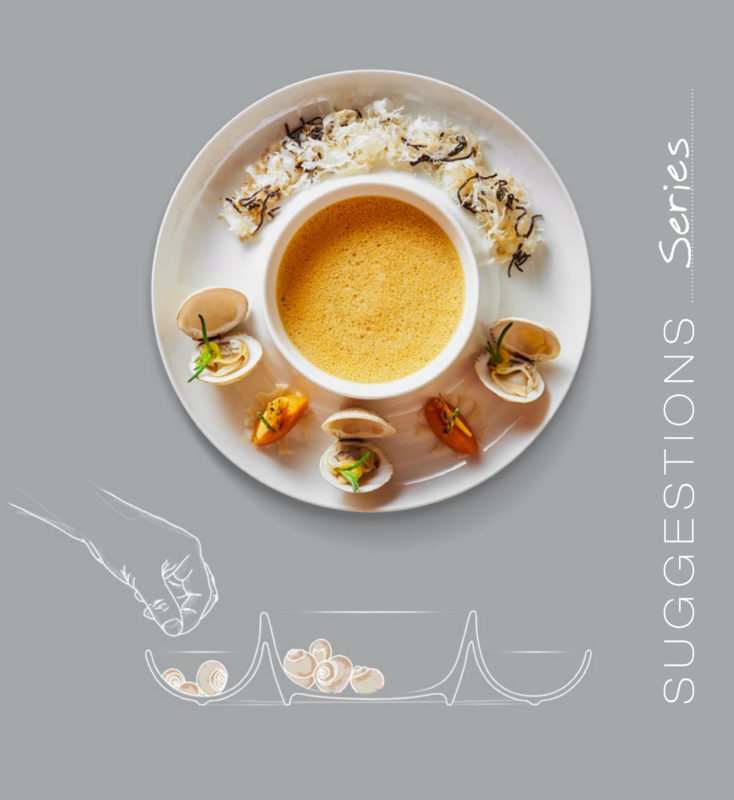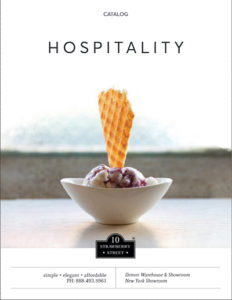by Michael Warner
I did it. Guilty as charged. We all do it, but that doesn’t matter. The point is, I did it and I have to atone for it. Here’s is how it all happened.
My colleague and I had only two days in Madrid to identify the perfect tapas bar, at least as far as our tastes were concerned. But we were becoming increasingly disenchanted. As in the case of local cuisine everywhere, there are two types of tapas bars in Madrid. Those for the casual visitors and those for, well, those who know tapas. The last stop on our list was La Casa Del Abuela located at the top of Calle de Victoria in Central Madrid. Tucked in a row of more “glitzy” tapas bars, we nearly missed it. Founded in 1906, and likely not having received much in the way of any exterior face-lifts since, it had grown into its period façade. Seating was an easy choice to make. There weren’t any chairs. Guests stood at a long marble bar or around small stand-up marble tables. The menu was painted on a mirror at one end of the bar and all in Spanish, of course. We kept our jackets on to ward off the chill of the late winter evening coming through the open front door. We were skeptical but we ordered the garlic shrimp and prawns. And then I did it.
The dinnerware on which the shrimp was served was a ten inch oval stoneware platter with a large cresting in red;“La Casa Del Abuela” proudly proclaiming “Fundada en 1906.” Even before I tasted the shrimp, I slid them onto a second plate and having flipped it over the first. There was no back-stamp. Madrid’s La Casa del Abuela There was nothing indicating a country of origin, brand, or factory coding. It was totally blank. The flatware was inexpensive and nondescript and the glassware was heavy. My mind was racing just as yours do when you flip over a plate.
But this is my confession, not yours. I began making all of the general judgments about the tapas bar overall, about their cuisine, and was even a little critical of the white-jacketed staff before I even ordered. All of the same judgments I had made about a multitude of restaurants around the world for years, based solely on their choice of tabletop. It’s a habit and it’s unfair. It misses the critical points.
In fact, this rather “chunky” (and not very well glazed) oval platter with a garish cresting, alongside a chipped terracotta cazuela of garlic shrimp, and with mixed pieces of glassware and flatware was theperfect tabletop for this tapas bar. It melded completely with the food and not simply “framed” it. The tableware told me of the more than one hundred year history of the restaurant. I saw these same plates in the historic photographs scattered here and there on the walls. It connected with the interior design, the architecture, and the neighborhood.
We all approach the task of tabletop selection through the lens of our own bias. Many restaurant operators and buyers often lead with selected brands they know or have heard of. But brands and reputation alone probably won’t compliment the entire menu. It may not compliment any of it. Chefs certainly know how to frame their food and will most likely select the best tabletop to achieve this goal. But their selection may stop at the food.
There’s more. Much more. Those of us who are in the tabletop marketing channel generally recognize the connection between tabletop, food, and other dining factors but we’re more often driven by either a fear of price objections or we recommend tabletop products that are most profitable in our particular selling situation. At the end of the day, for the most part, we all miss the critical point – the total dining experiencefor the customer.
Enriching the dining experience and achieving our business and professional goals are not mutually exclusive. Restaurant operators can still make their budgets, chefs can still display their culinary creations, and tabletop sellers will still earn a profit. We’ve been going about it backwards. Rather than cling to our own limitations and fears, we need to begin with a vision of the total dining experience and then work our way back upstream to the individual elements.
Then it will all fall into place.
At the end of the day, our customers may not be able to consciously identify and articulate the tabletop elements that go into their dining experience, but they certainly feel it. It’s intuitive. Does the food look appetizing on the plate? Does the glassware speak of the quality and cost of the beverage? Does the flatware feel comfortable when it’s used? Does it all balance on the table and, don’t forget, match the dining surface? And does this entire tableware ensemble match the interior of the restaurant and style of wait staff service?
That evening in Madrid, even including the neighborhood and weather, meshed perfectly in a marvelous and memorable dining experience. I don’t have any recollection whatsoever of what it cost. It doesn’t matter. But I do distinctly remember standing there at the marble bar, peeling shrimp, sipping wine, dipping bread in the hot garlic oil, hearing the chatter in Spanish around me, taking in the history of the restaurant, and feeling the chill in the air.
You can’t top that experience.
At any price.
Michael Warner bio:
Following stints in global supply management with McDonald’s Corporation, Edward Don & Company, and as an independent consultant; Michael Warner has spent 22 years as Managing Director of Global Supply Chain Management with Allied Buying Corporation, a leading foodservice equipment and supply buying group. In this capacity Mike developed global supply management strategies in support of the tableware channel.


